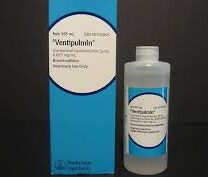Calmant injection
Original price was: $55.00.$50.00Current price is: $50.00.
Calmant injection typically refers to a veterinary medication used to calm or sedate animals, particularly in situations where they may be anxious, stressed, or requiring restraint for medical procedures. Here are some key points about calmant injections:
1. **Purpose**: Calmant injections are used to induce calmness and reduce anxiety or stress in animals. They are often administered before veterinary procedures such as examinations, treatments, surgeries, or during transportation.
2. **Ingredients**: Calmant injections may contain various active ingredients, such as sedatives or tranquilizers. Common medications used include acepromazine, xylazine, diazepam, or combinations thereof, depending on the desired level of sedation and the species of animal. Calmant injection
3. **Administration**: They are typically administered via intramuscular (IM) or intravenous (IV) injection by a qualified veterinarian or trained professional. The dosage and frequency of administration depend on factors such as the animal’s size, temperament, health status, and the procedure being performed.
4. **Indications**: Calmant injections are used in veterinary practice to facilitate safe handling and reduce stress for both the animal and the veterinary team. They can also be used in emergency situations to manage acute anxiety or aggression.
5. **Monitoring**: After administering a calmant injection, it’s essential to monitor the animal closely for any adverse reactions or unexpected responses. Monitoring includes assessing heart rate, respiratory rate, and overall responsiveness until the effects wear off.
6. **Safety Considerations**: While calmant injections can be beneficial, they should only be used under the guidance of a veterinarian. Over-sedation or inappropriate use of tranquilizers can pose risks to the animal’s health, so proper dosage and administration are critical.
If you are considering using a calmant injection for your animal, it’s important to discuss it with your veterinarian. They can recommend the most suitable medication, dosage, and administration method based on your pet’s specific needs and circumstances.








Reviews
There are no reviews yet.